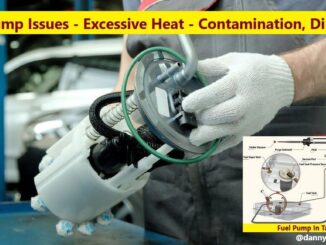
Engine sludge forms, as the engine oil oxidizes and breaks down.
During oxidation the oil combines with dirt, fuel, metal particles, water, gases, and coolant.
As a result, leaving behind deposits, recognized as engine sludge. As the lubricating properties break down and are diminished, then are less able to clean the engine.
When engine sludge is present, oil is not able to properly lubricate the moving parts of your engine.
So, at some point additives and detergents will evaporate, lose potency and disappear. Engine oil sludge often results from, poor maintenance and low grade oils.
Consequently, a good engine oil will keep all of these harmful contaminants, suspended in the oil. So, they can be flushed out, on your next oil change. But, some engines appear to be, more prone to sludge buildup than others.
Certain Engines Are More Prone To Sludge Than Others
Just because you carefully follow the manufacturer’s instructions, doesn’t mean engine sludge build up won’t happen.
But, some engine manufacturers, appear to be more prone to sludge buildup than others:
- Chrysler
- Toyota
- Volkswagen
Take note of recalls and service bulletins, related to your car and have all repairs handled immediately. Engine sludge prone engines, should change the oil according to the “extreme use” schedule in the owner’s manual.
Know Where To Look For The Warning Signs:
- Low oil pressure or intermittent flashing of the oil light.
- The oil light remaining on, when the engine is running.
- Slow draining of oil during oil change. (sludge is stopping the remaining oil from draining)
- Obvious signs of thick sludge in oil fillers, rocker covers etc.
- The engine won’t accept, the proper amount of oil, after an oil change. (sludge is taking up some, or most of the oils space)
- Noisy valve lifters. (where fitted)
Important Ways To Stop Or Slow Down, Engine Sludge:
Proper Engine Maintenance
Engine sludge is very common, and is also a very costly problem. Proper maintenance is the most important key, to the prevention of engine sludge. The development of engine sludge is directly related, to how often you change your oil. Did you know, manufacturers market their oils with specific additives, to customize their products, for different types of engines.
As a result, these oil additives include, conditioners that lubricate the seals to prevent leaks. Detergents are there primarily, to prevent deposits. They’ll also inhibit rust and corrosion, inside your car’s engine. And, help dissolve existing buildup, before it becomes a problem.
Crankcase Ventilation System – (PCV) Valve
So, engine sludge can be caused by, a poorly designed or defective, (PCV) system. If the (PCV) system fails, severe sludge buildup and oil leaks can occur. The (PCV) system, helps remove moisture, a major contaminant in the oil. So, when an engine is running, it generates a good deal of heat. And, when the engine cools, condensation forms.
Engine oil additives, absorb this moisture and hold it in suspension. In time, the moisture content, exceeds the capacity of the additives. When this occurs, moisture attacks the metal parts of the engine causing damage.
One sign of moisture contamination, is a cloudy or milky film, in the (PCV) valve or hose. Finding moisture in the (PCV) valve, suggests a need for replacement. But, is also a sign of other problems.
Replacing the (PCV) valve, gets rid of the symptom. But, the problem remains, and symptoms will soon return. High moisture content means, we need more frequent oil changes, and longer drive cycles. A moisture buildup with normal driving, shows other engine problems. Several areas of an engine can allow leakage, and oil contamination. Resulting in, engine sludge.
Coolant And Fuel Leaking Into The Oil, Is Very Serious
Moisture contamination, flows through the engine oil filter, as it is a liquid. This is one reason why, oil must be changed. Short trips make the problem far worse, as the engine does not reach, full temperature.
So, oil should be replaced more often, when average driving distance, is under ten miles. As the engine reaches full operating temperature, the heat of the oil, causes the moisture to boil. If the vehicle is driven far enough, the (PCV) system will scavenge much of this moisture from the oil.
So, this is one reason vehicles can go further between oil changes, when the average trip is very long. While, with short trips, this does not occur, requiring more frequent oil changes.
The type of driving determines, oil change needs. And, is a better guide, than just the number of miles driven.
In Summary: Engine Sludge Can Be Reduced: If you Know Where To look
So, it’s no coincidence that, one of the most overlooked problems, is also responsible for the most costly repairs. That’s why, overlooking engine sludge, is a decision that most people will regret. Therefore, searching for signs of engine sludge, changing your oil regularly and reading your car’s manual, is a must. Finally, a little planning and effort now, can save you a lot of trouble down the road.
Thank You !!




